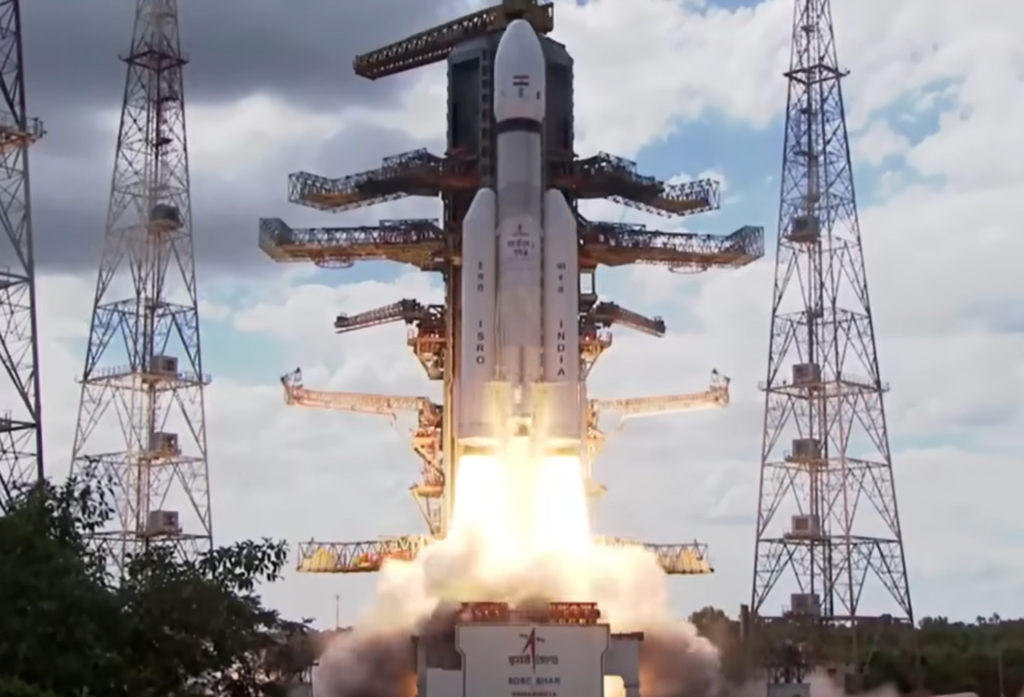India’s historic moon mission chandrayaan III which made history as the first mission to land in the lunar South Pole region making India the fourth country to successfully land on the Moon.
Chandryaan 3 is busy exploring and discovering new things about the moon and its South Pole mystery and capturing amazing new images.

Table of Contents
What chandrian 3 has achieved and found so far and why these findings are important and what they can reveal about the moon and its history.
It takes around 1.3 seconds to send a command from Earth to the Moon and another 1.3 seconds to receive a response that’s why the Lander and the Rover are pre-programmed to do this operation autonomously using their onboard computers and sensors. They have to rely on their own intelligence and skills to work safely on the Moon. The Pragyan Rover navigates and avoids hazards on the moon, its main engine at the bottom which was used to slow down its descent and soft land on the moon. Landing on the moon which was not an easy task in fact only three other countries have done it before Russia the USA and China. Landing on the moon requires precise timing navigation and control of speed and altitude any error or malfunction can result in a failure or a crash that’s why landing on the moon is often called the hardest part of any lunar mission but this is not only a proof of success it is also a tribute to a legend Vikram Sarabai who is considered the father of India’s Space Program he was a Visionary scientist who founded the Indian space agency in 1969 and initiated many space projects in India. He was also a Pioneer in fields such as Nuclear Physics cosmic rays’ meteorology education industry and Social Development.

The Pragyan Rover descending to the lunar surface as observed by the Vikram Lander was recorded by vikram’s imager camera which is mounted on its top side this camera is used to help the Vikram Lander monitor its surroundings and communicate with the Pragyan Rover slowly and carefully moves towards the moon’s surface while Vikram Lander watches over it in the background.
The Pragyan Rover moving on the moon using its six wheels which are powered by solar energy. The pragian Rover is the main instrument of the chandrayan-3 mission it is designed to explore the lunar South Pole region and conduct various experiments and measurements can travel up to 500 meters from the Vikram Lander and it can communicate with the Vikram Lander and Earth using radio signals but moving on the moon is not as easy as it sounds. Pragyan Rover faces many challenges while moving such as low gravity uneven terrain dust particles and extreme temperatures
How Pragyan Rover deals with these challenges
- 1. Low gravity – the gravity on the moon is only about one-sixth of that on Earth this means that Pragyan Rover weighs much less on the moon than on Earth this also means that it can jump higher and farther which means that it has less traction and stability than on Earth to overcome this challenge the Rover has a special suspension system that allows it to adjust its height and tilt according to the terrain it also has a speed limit of one centimeter per second to avoid losing control or flipping over.
- 2. The uneven terrain on the moon is very rough and Rocky with many craters Hills and Valleys, this makes it hard for Prague and Rover to find a smooth and flat path to move on to overcome this challenge Pragyan has a sophisticated navigation system that uses sensors cameras and algorithms to map the terrain and plan the best route to avoid obstacles it also has a hazard avoidance system that can detect and avoid potential dangers such as large rocks or steep slopes.
- 3. Dust particles – The dust particles on the moon are very fine and sticky and they can cover everything on the moon surface. This can affect the performance and functionality of Pragyan Rover’s instruments and components, for example dust particles can block the solar panels that provide power to the Rover or they can damage the cameras that provide vision to it to overcome this challenge the Rover has a dust protection system that uses brushes blowers and heaters to clean and protect its instruments and components from dust accumulation.
- 4. The extreme temperatures of the Moon vary widely depending on whether it is day or night or whether it is exposed to sunlight or shadow it can range from -156 degrees Celsius at night to plus 121 degrees Celsius during the day this can cause thermal stress and damage to the Pragyan Rover’s instruments and components. To overcome this challenge the Rover has a thermal control system that uses insulation radiators and heaters to regulate its temperature and keep it within safe limits.

Why the lunar South Pole region is very interesting and important for lunar exploration.
One of the main objectives of this mission is to study the lunar soil composition in the South Pole region, which is different from other regions of the Moon. The lunar soil composition can tell us a lot about the origin and evolution of the Moon as well as its geological processes and activities. Surprisingly the results of this analysis till showed that the lunar soil in the South Pole region contains high amounts of sulphur, which is unexpected and unusual. This element is important for life, as it is part of many biological molecules such as amino acids and proteins. It is also a key ingredient in volcanic activity as it is often found in magma and lava. The presence of element in the lunar soil in the South Pole region suggests that this region may have had some form of life volcanism or meteorite impacts in the past. This is very exciting and intriguing as it can change our understanding of the Moon and its history. It can also open new possibilities for future exploration and colonization of the Moon foreign.
The temperature of the Moon surface measured using the Vikram Lander’s chaste instrument which measures the temperature of the moon’s surface. it stands for chandra’s surface thermophysical experiment and it is one of the scientific instruments on the Vikram Lander. It is used to measure the temperature profile of the lunar topsoil around the pole. to understand the thermal behaviour of the moon’s surface by measuring the temperature of different depths of the soil chaste can create a thermal map of the moon’s subsurface. The results of the chaste measurement showed that the South Pole region is one of the coldest and hottest places on the moon and that it poses a great challenge for survival and exploration. Chandrian III is a remarkable contribution to lunar exploration.
Also checkout other posts:
Holographic image, Inventive Future of Hologram in real life (infonextgen.com)
